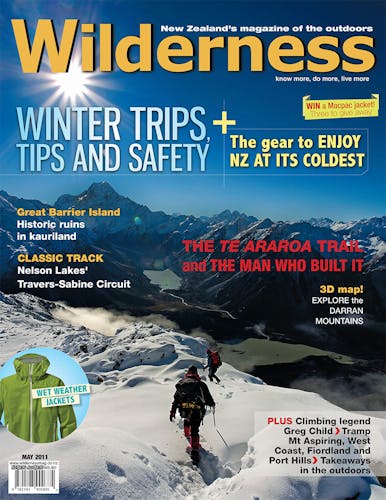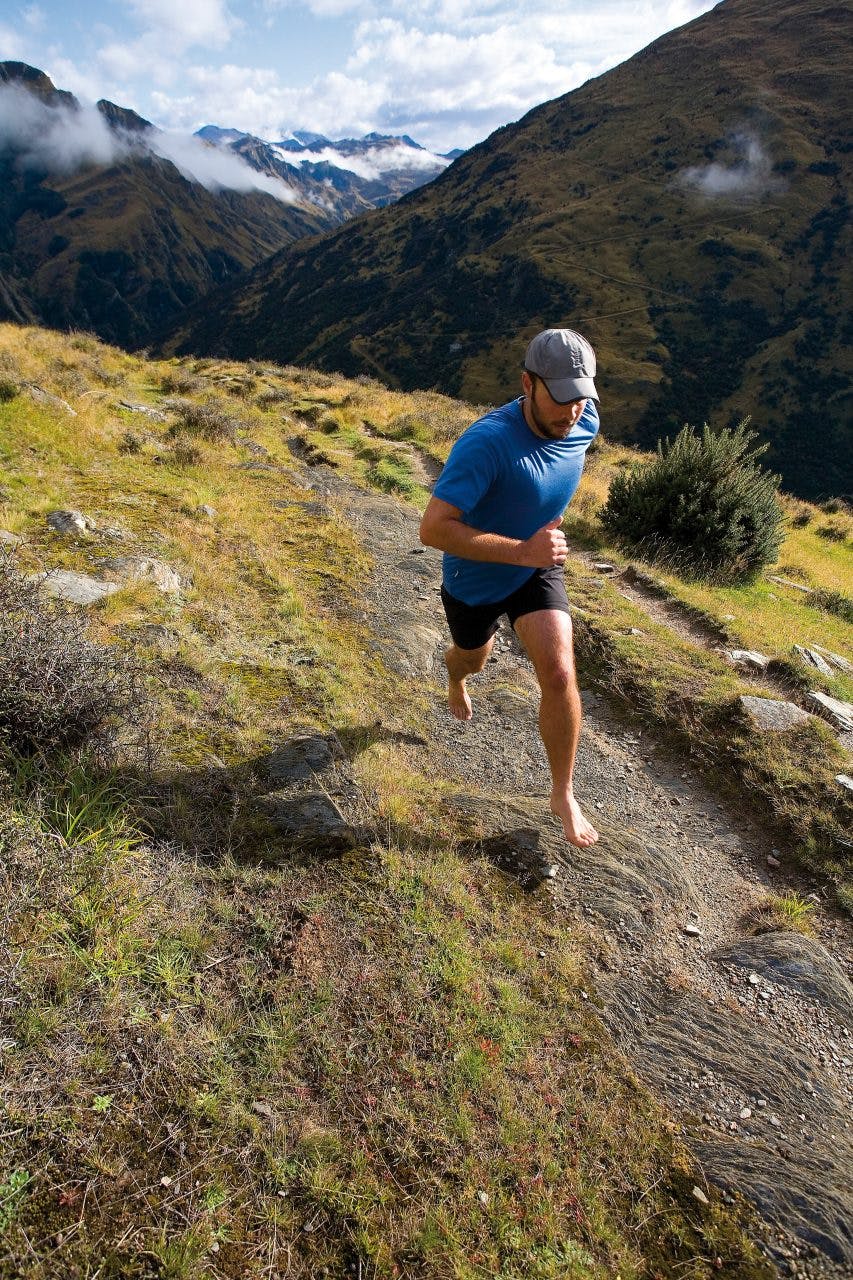Running on fumes – or how to get closer to nature without busting the bank
I’ve recently discovered the latest fad in trail running – going barefoot. Over the years I’ve seen dozens of exercise fashions come and go and have taken great pride in avoiding most of them. But this one really appealed to me for one simple reason: I already had all the necessary gear conveniently attached to the ends of my legs.
Yes, much as I’d love to say it was some sort of lofty intellectual concept or cooler-than-thou fashion sense that led me to explore bare foot trail running, in truth it was simple stinginess that was the catalyst.
After two marathons and a few adventure races, my trusty running shoes were looking well past their best-before date. I’d been putting off replacing them for months but just couldn’t face coughing up the cash – at three hundred bucks for over-pronators’ running shoes, plus another two hundred or so for orthotics – it was cheaper to catch a taxi than run.
But as all runners know, their pursuit is not so much a sport as a compulsion – an itch that must be scratched. Something had to give. Eventually the Ebenezer Scrooge and Peter Snell parts of my personality reached a compromise – we’d run… but we’d do it barefoot.
As it turns out, the latest anthropological wisdom actually supports this sort of foolishness. Research from top universities like Utah, Arizona and Harvard shows that homo sapiens’ key competitive advantage in our first few million years as a species was our ability to run long distances in stifling heat.
Quadrupeds may have had a speed advantage, but our efficient running gait and effective cooling mechanisms gave us an endurance edge. Combined with a brain capable of working together as a team, this allowed us to carve out a niche – as pack hunting animals.
What that’s translated to, biomechanically speaking, is a body perfectly designed for endurance running: we’ve got strong, shock absorbing Achilles tendons, wide toes for stability and big bum muscles for speed. Unfortunately, the thing we’ve discovered recently is that when you pop on a pair of modern running shoes you tend to switch these features off, which results in the plethora of injuries that afflict modern runners.
The idea of barefoot running sounds great doesn’t it; breaking free from the shackles of modern life, liberating yourself from your fancy running shoes, forgetting your injury woes and striding bare-foot and bare-chested into the hills. That’s the theory at least; but in practice the first dozen or so barefoot runs weren’t quite as macho as I’d expected.
After 30 years of getting around in hiking boots, sneakers or at least jandles my feet were soft as a new-born-baby’s, so my first barefoot sojourns certainly weren’t the howling primeval romps that I’d envisaged. In truth the first miles were covered with an effeminate trot accompanied by a colourful stream of expletives: “Ow! Sh*t! Eik! Argh! Ow! Sonofa!”
But I’m nothing if not irrationally stubborn. And so I’ve persisted. These days I’m still no Phidipedies; my longest run has been a whopping 8km, which took me over an hour. But it’s starting to show some promise. Usually I suffer from chronic running induced knee, ankle and hip problems, but it seems when you’re trying to land gently to look after your feet the rest of your body seems to look after itself – which makes sense really.
Along the way I’ve learned a lot. For starters, going barefoot is a great icebreaker. I don’t think I’ve run past a single person who hasn’t stopped to chat. But in truth, most of the following conversations can be summed up in six words: “Why have you got no shoes?”
Initially, full of enthusiasm, I’d dive into the full theoretical explanation: “Well, anthropologically speaking humans are designed for…” but after a few minutes their eyes would begin to glaze over and I’d hastily summarise to “So yeah, um… it’s supposed to be good for you”.
I’ve also gained a whole new insight into the trails I run. When you press your flesh directly against the earth it gives you a whole new understanding of your environment. So far I’ve learned to hate manmade gravel – there’s something about mechanically crushed rocks that are especially unfriendly to the feet. Mud on the other hand is pure luxury; it’s gentle on the sole and there’s just something about it oozing up through your toes that takes you back to being a care-free five-year-old.
But a sword of Damocles hangs over this four-million-year-old fad for me – the onset of winter. As this story goes to print, my hometown of Queenstown will be getting its first frosts and soon some of the trails will be permanently frozen.
I’ve considered lashing out on a pair of bare-foot mimicking shoes like Vibram’s Five Fingers (basically a rubber sock with separate toes) to prolong the season, but so far I’ve baulked. Firstly, because a big part of the joy for me is elegant simplicity of the whole affair – but mainly because my girlfriend says that the day I dress like a middle-aged Mutant Ninja Turtle is the day I sleep in the spare room.
In truth it’s hard to say what lies down the trail for my bare foot trail running. It may prove to be just another rush of blood to the head (or should that be feet) after my first broken bottle – or broken toe – it might be relegated to the already overflowing ‘seemed like a good idea at the time’ file.
But then again I’ve always fancied dragging myself across another marathon course. I’m resigned to the fact that I’ll never break any records, but doing it in bare feet would certainly garner some bragging rights. I guess like all good adventurers, I’m not 100 per cent sure what’s lies ahead – and that’s half the fun.








